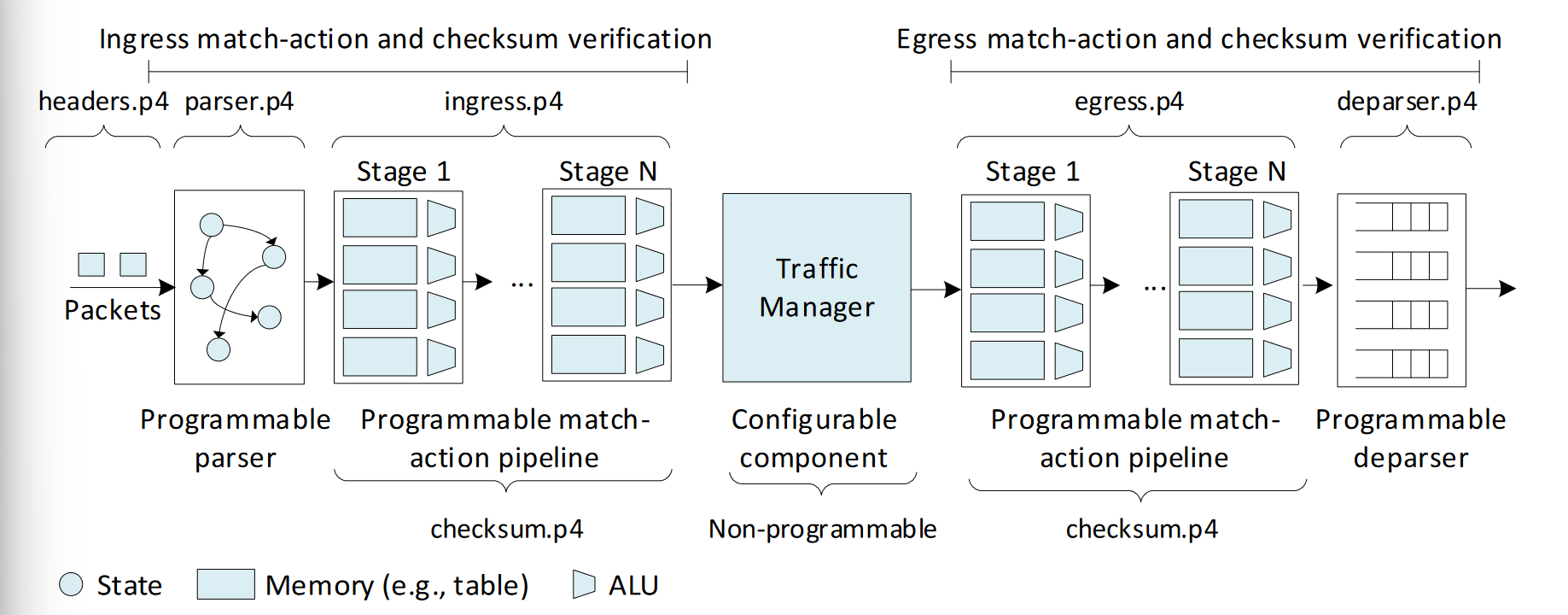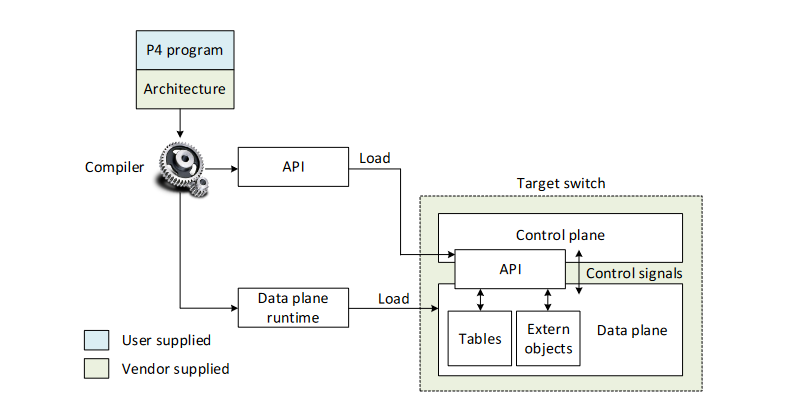Granular Packet Monitoring
July 16, 2023 · 3 minute read
Introduction
Research Challenge
Statistics:
- Source and destination IP address
- Source and destination transport-layer ports
- Amount of unidirectional traffic (bytes)
- Start Time
- End Time
- Rate (bits per second)
What is P4?
P4 is an open source, domain-specific programming language for network devices, specifying how data plane devices such as switches and routers process packets. P4 allows developers to acheive results at a granular level, allowing for extremely precise results. By providing a programmable language for network devices, P4 facillitates innovation and experimentation in network architectures and protocol.
P4 Structure
headers- contains the packet headers and metadata definitionsparser- contains the implementation of the programmable parseringress- contains the ingress control block that contains match-action tablesegress- contains the egress control blockdeparser- contains the code that verifies and computes checksums

Code Overview
headers.
parser block will be parse and ethernet, IPv4, and TCP headers.
ingress block is where the majority of implementation will take place. In order to store data pertaining to the various different flows, registers will be used. Their size will correspond to the byte size of the statistic, for example since IP Addresses have a byte size of 32, the registers will also be a byte size of 32 in order to store the data. The size of the registers will be 65536, which will be explained later on.
flowID. This will be used as the primary way to identify and index into registers.
65536 or 2^16 due to the nature of the hashing algorithm in use. A standard forwarding table will be used, and applied in the apply block. Otherwise, the program will compute the hash of the packet entering the network device. If the unique hash value, the flowID has already been generated and already exists, then it will amend the start and end time of that flow, as well as the total amount of unidirectional traffic.. Source, destination IP Address and Port stays constant. Otherwise, we can assume that this is a brand new flow. Simply add the data in to the registers and indicate that the flow now exists.
Workflow of a P4 Program
After compiling a P4 program, two files are generated. A data plane configuration file that implements forwarding logic that includes instructions and resource mappings for the target. Then it generates runtime APIs that are used by the control plane to interact with the data plane. For example adding and removing entries from match-action tables or reading/writing the state of objects. This allows users to manipulate tables and objects.
